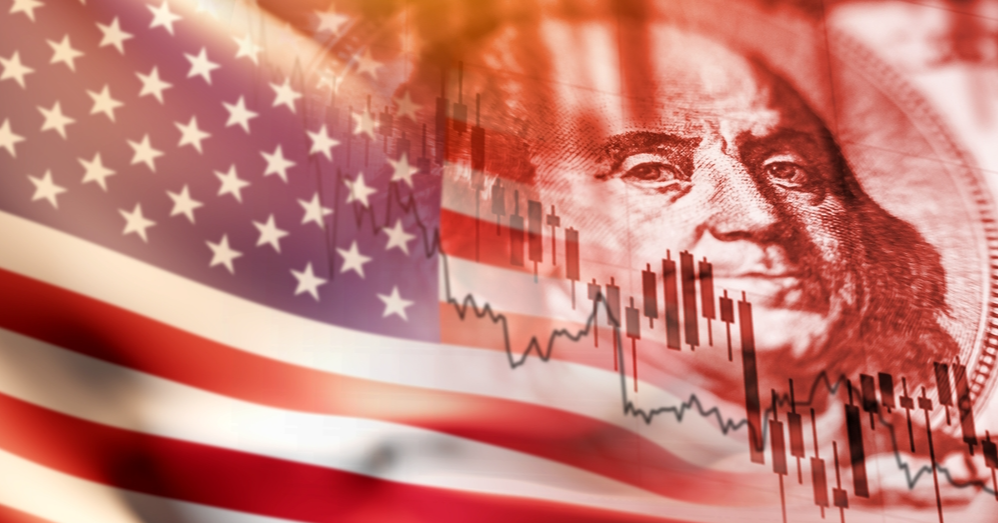This podcast is originally produced and published by BFM 89.9 and can be found at https://www.bfm.my/podcast/morning-run/market-watch/us-fed-tech-nasdaq-cop28-energy-red-sea-2024.

With CI Markets Free, our goal is to democratize financial insights. We believe that everyone should have access to powerful forecasting tools, enabling them to make informed decisions that align with their financial goals.
In this BFM podcast episode, the hosts interview Tony Nash, CEO of Complete Intelligence, who explains the sudden downturn in US markets and predicts a slowing rate of rise for the Nasdaq in 2024. Nash also discusses the potential outperformance of finance and banking sectors over cyclicals and forecasts a lackluster year for 2024.
Additionally, the segment covers developments from the UN Climate Change Conference, COP28, and its long-term impact on energy markets. Tony highlights the challenges faced by middle-income and emerging markets in transitioning to green technologies amidst fiscal constraints and higher interest rates. The discussion also touches on the disruptions in the Red Sea region’s supply chain and their potential economic impacts, as well as the positive revenue forecast and strong performance of Micron, a leading US memory chip maker.
Transcript:
BFM
For some thoughts on what’s moving international markets, we have on the line with us, Tony Nash, CEO of Complete Intelligence. Tony, good morning. Thanks for joining us. Very quickly, can maybe you help us understand why US markets are down quite significantly this morning? I thought it was a Christmas rally all the way up to the end of the year. What explains the markets being in the red?
Tony Nash
The old Santa rally? Well, markets were doing great until about 1:30 Eastern time, and then they just fell off a cliff and we closed in the red. Even things like Nasdaq, up until about 1:30 PM, Nasdaq had been up six % for the month, so it was doing extremely well. Then things turned and I think there may be some whispers of an event coming or there’s fear that the Fed isn’t going to be as doveish as was said. I think possibly going into the break, people are really thinking about how much risk they want to have on over the holiday.
BFM
But what does that mean for, I guess, the end of the year performance? Especially if we look at the Nasdaq 100, it is up a whopping 41 % for the year. Are we going to see a repeat of this outperformance next year? Or do you think we’re at the zenith of the euphoria?
Tony Nash
Are we at the zenith? I don’t know. Certainly, the rate of rise will slow. I seriously doubt we’re going to see things fall off dramatically in, say, January. But just to give you an example, we forecast markets, as you know, and currencies and stuff. We had forecast a 5.65% rise in Nasdaq for December. Up until 1:30 today, it had risen 6%. We’re pretty good at forecasting that. Our average expectation for Nasdaq in 2024 is 14,746, which is a fall from now. I would expect we’ll start out Q1 fairly okay, but through the year, the appeal of Nasdaq is going to decline. As people accept that hire for longer is here to stay, which doesn’t mean rates are going to continue to rise, but they’re not going to fall for six cuts or whatever, 10 cuts that some people are saying.
BFM
Tony, it wasn’t solely growth stocks, which captured the limelight. Now, cyclical names like Carnival Cruisers and GE saw their share prices surge 117 and 86% respectively in 2023. Now, are investors likely to see more symmetric returns coming from growth and defensive companies next year?
Tony Nash
It’s unlikely, sadly. We saw companies expand margins with cost inflation as an excuse to justify price rises as incomes grew and government cash handouts accumulated. But we really saw that stuff stop in 2023, second quarter, third quarter with inflation abating. Now, inflation abating doesn’t mean prices falling. It just means that the rate of price rises is slowing. Pay rises are unlikely to continue and consumers will likely have to tighten their belts. As that happens, cyclicals will settle. Things like travel and tourism, things like GE will have to settle a bit. The returns really depend on your risk appetite. So where to look? I would say look at things like finance and banking, some natural resources like miners. I wouldn’t necessarily go directly in commodity prices, but I would look at some of those guys who process natural resources, those sorts of things.
BFM
Tony, overall, what’s your investment outlook and advice for 2024 when it comes to asset allocation then? Because bonds were very volatile this year. Is it going to continue next year? Equity surprisingly did much better despite the talk of a recession that has yet to materialize. What’s your recommendation?
Tony Nash
Yeah, I think if you look at the tenure, for example, I think it’s hard to see the tenure much higher than, say, 4% over the next few months at least. Sentiment is really doveish or has been really doveish. The words out of the Fed, they haven’t completely walked back Powell’s very doveish briefing last week. People still believe that the economy has a way to run and that rates will come down dramatically. I actually think the ’24 is probably going to be a pretty lackluster year. I think after the excitement of the last few years, I think we could all do for a little less excitement for a period of time. But the Fed has really been trying to crush volatility and cap yields. They’re trying to take the risk out of the market, but not have the market get out of control.
BFM
Can we take a look at some of the year and themes that have been circulating around? And this really comes from the UN Climate Change Conference that took place in December COP28. It did stop short of calling for a phase out of fossil fuels, opting instead for a transition away from them and specifically in energy systems. How are markets responding to this development? And what do you think are the implications of investors in the energy sector? Is this more likely to be a long-term development rather than a short term one?
Tony Nash
Absolutely a long-term development. COP28 paved the way for a much longer path to fully green feedstocks. They even talked about coal and released some of the pressure on coal power generation. Part of the problem here is higher interest rates. Higher interest rates are making these very costly green projects much more expensive. The government bureaucrats who are really pushing this stuff have to find a way to temper expectations for that green spending without completely surrendering to the fiscal constraints. A lot of these, say, middle income and emerging markets that are pushing green projects or having been pushed on them, this is where budgets are super tight. Look at a country like Sri Lanka where they have an IMF support. There’s push for green technologies, but they just can’t afford to do it. A lot of countries are looking at balancing that out and trying to figure out how they continue to move toward a greener future, but balancing out the fiscal reality of higher interest rates and budget constraints.
BFM
Now, we’ve been reading news about disruptions in their supply chain, especially in the Red Sea region. Now, geopolitical tensions have caused shipping companies to divert over $30 billion worth of cargo away from the Red Sea? What are the potential economic impacts, especially on the price of oil from disruptions on global supply chains?
Tony Nash
Yeah, it really depends on the horizon and how long this is going to last. I would expect this to be a relatively short-term event. If it is a relatively short-term event, then it’s pretty inconvenient. It’s pretty inconvenient, but it’s not really all that costly because we have shipping rates that are pretty low, we have fuel rates that are pretty low. The impact, aside from delays, and in the West, we’re at the end of the holiday season or we’re mid holiday season, but things shipping have already shipped in terms of finished goods. So the impact on consumers isn’t going to be felt like this is… If they’re going to do this, this is probably a really good time of year to do it because everything’s in shops.
BFM
Tony, thanks so much for speaking to us. And Merry Christmas to you. We look forward to catching up in the new year. That was Tony Nash, CEO of Complete Intelligence, giving us his take on some of the trends that he sees moving markets in the days and weeks ahead, commenting there on the shipping disruptions in the Red Sea, as well as what the impact might be on oil prices also coming up out of COP28 and just the developments that could happen in the energy landscape.
BFM
I wonder whether 2024 is going to be the year of the Magnificent Seven, right? It was so much talked about in 2023, these seven stocks that literally lifted up the Nasdaq and, of course, the S&P 500, of course, the seven A, Apple, Microsoft, Alphabet, Amazon, Nvidia, Meta, and Tesla.
BFM
I feel like it’s getting longer and longer. It used to be the fang stocks, and then it was like FAG, and then now it’s the Magnificent Seven.
BFM
Yeah, it went from 1A to double As, right? And now it’s a whole new acronym. So I don’t know, are they going to add a new Magnificent 8, 9, 10, or is it just going to be down to maybe that magnificent three, because some haven’t done so well. For example, Tesla is the one that actually hasn’t performed at all. That surprised me. But talking about, I think overnight, there was a big US talk that came out with the results, the biggest chip maker there, which is actually Micron, and they did better than expected.
BFM
That’s right. Micron issued a strong revenue forecast for the current period and reporting for the first quarter results topped Wall Street estimates. This really sent the shares of Micron surging about four % in extended trading. This is as data center demand is making up for a slowly recovering PC and smartphone market.
BFM
In the fiscal first quarter that ended on 13th of November, Micron saw a 16 % year-on-year rise in its revenue to $4.7 billion. Loss per share came in 95 cents, which was better than what analysts’ estimates are. And now the largest US maker on memory chips expects fiscal second quarter revenue to be between $5.1 to $5.5 billion, versus an average estimate of $4.99 billion.
BFM
Okay, so this pales in comparison with NVIDIA, which also does chips, but of course, NVIDIA is all about artificial intelligence. It’s the number one proxy if you want to write that theme. But Micron, on a year to date basis, still up 54 %. Now, does the street like this? Because it hasn’t been doing so well in the past in terms of the results. Are we at the trough? And the indications are yes. So unsurprisingly, there are 30 buys, seven holds, two sales. Consensus target price for Micron is $85.25. During after-market hours, actually, the stock did trade up eight %, so indicating that I think investors are going to be more optimistic just based on the guidance that the company is giving.
BFM
All right, it is 7:17 AM. Let’s head into some messages, but we’ll come back to cover the top stories in the newspapers and portals this morning. Stay tuned, BFM 89.9.


